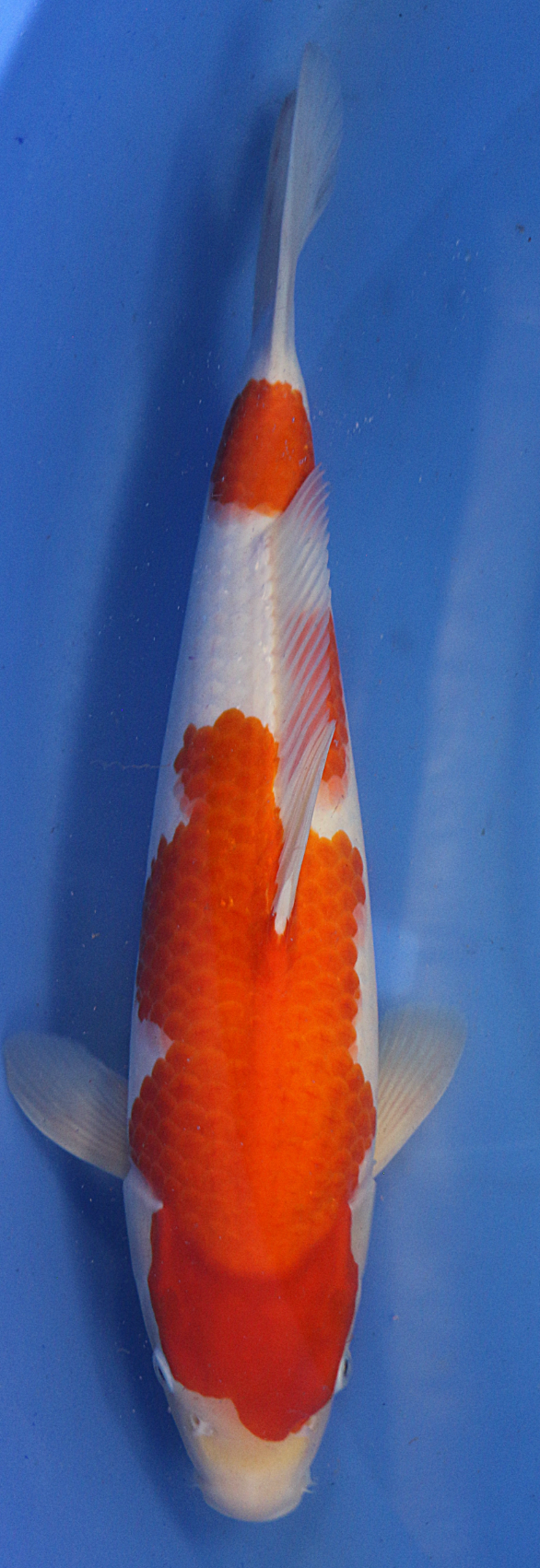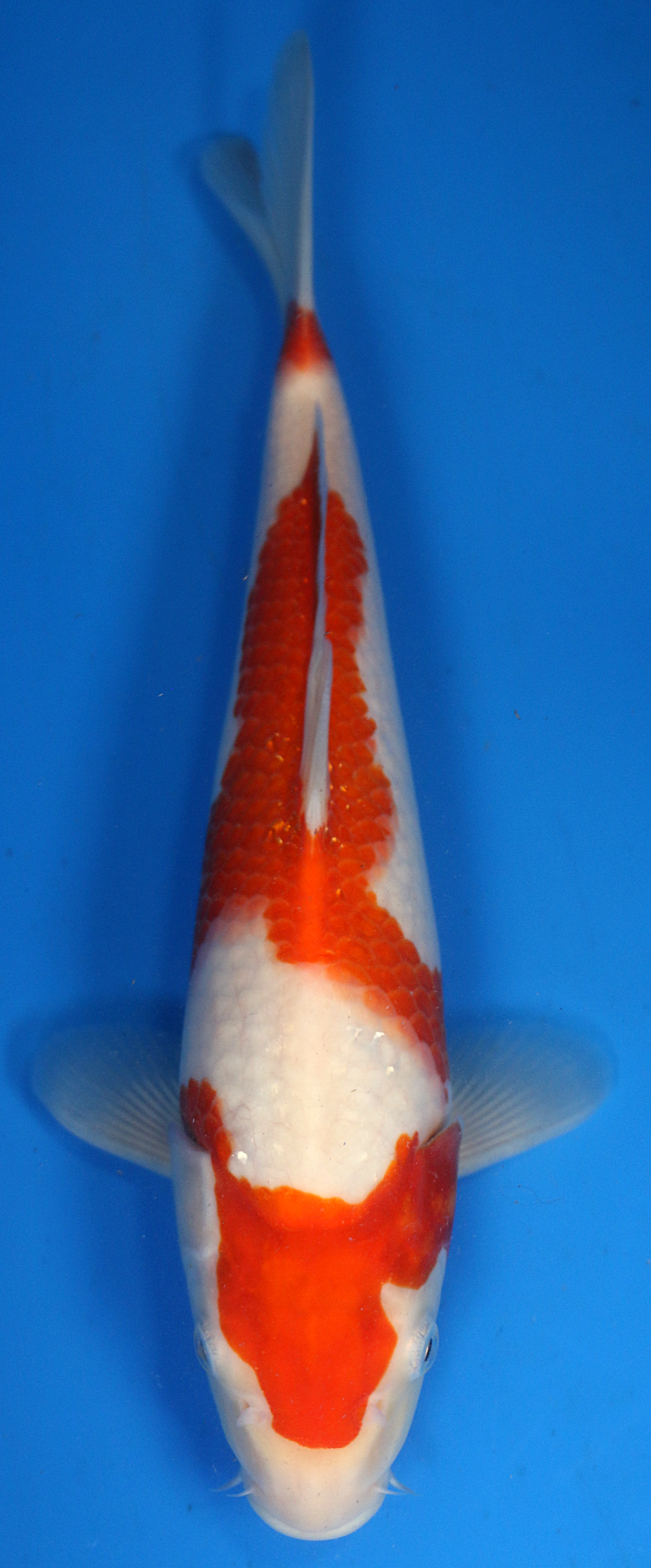How to Select Young Kohaku Koi for the Future
- Tri-Star Koi
- Aug 23
- 6 min read
Updated: Aug 27
By Tri-Star Koi
If you’re serious about koi, you can’t avoid Kohaku and truthfully, you wouldn’t want to. Kohaku is not only the most well-known koi variety but also the foundation for many others. Clean, simple, and elegant, a well-selected Kohaku often becomes the centerpiece of a collection.
But don’t let the simplicity of red and white fool you selecting a high-quality Kohaku is one of the most nuanced decisions in koi keeping. With fewer distractions (no black pigment like in Sanke or Showa), every flaw becomes more visible. That makes pattern, skin, body, and balance even more critical.
At Tri-Star Koi, we travel to Japan and visit farms like Murata, Torazo, Maruyama, Takigawa, and Matsue, all known for their Kohaku excellence. We’ve learned firsthand how to evaluate young fish for future potential from growing and developing koi, and we’re here to share that experience with you.

What Makes a Kohaku?
Kohaku are white-bodied koi with red markings this red is called hi. While the color combination seems simple, it's the clarity, balance, and refinement of these two colors that determine the quality of the fish.
In Japanese koi culture, there's an old saying:"The koi journey begins and ends with Kohaku."
This variety teaches you everything about koi appreciation skin quality, color development, proportion, and growth potential.
The 5 Key Traits to Evaluate When Selecting Kohaku
1. Body Conformation – The Framework for Quality
Before anything else, examine the structure and shape of the koi.
Look for a strong, symmetrical, and well-built body, especially across the shoulders and spine.
The koi should have a good taper from the head through the midsection and toward the tail.
Fins should be clean and proportional, without deformities.
A strong body will support better growth, health, and an even distribution of color as the koi matures.
Tip: A Kohaku with excellent color but a weak frame will almost always be outclassed over time by one with strong conformation and developing color.
2. Skin Quality – The Canvas of Kohaku
Skin quality is often the first thing that separates an average Kohaku from a great one.
The shiroji (white skin) should be pure, clean, and bright, almost like porcelain.
The white should look radiant, not dull or stained.
Skin should have a natural luster or sheen, a sign of good health and proper genetics.
Many top breeders focus on improving shiroji quality because it's what makes the hi stand out and it’s often the first trait a judge or experienced hobbyist will notice.
3. Hi (Red) Quality – Consistency and Depth Matter
Hi is the heart of the Kohaku. The red needs to be:
Thick, even, and deep, with no weak spots or bleeding into the white.
Free from shimmies (random black scales), uneven patches, or fading.
Clear at the edges (kiwa) and well-anchored.
Hoshi refers to the intensity and quality of Beni (red pigmentation) in a koi. When examining the center of each Beni scale, the ideal pattern shows a strong concentration of red in the middle, gradually softening toward the edges of the Hi plate. This uniform distribution across all Beni scales indicates that the koi will develop with better elasticity and color consistency as it grows.
The color should be consistent across all red patches. In young koi (tosai), the hi may still be developing. That's okay what you’re really looking for is the potential for solid, rich coloration that will hold over time.

4. Pattern – The Artistry of Kohaku
Pattern is where selection becomes subjective. Some prefer bold, dramatic patterns; others like quiet elegance. But there are some general principles to guide you:
The pattern should be balanced from head to tail, not all clustered in one area.
A “three-step” pattern (sandan) is classic, but two-step (nidan) and four-step (yondan) are also desirable when executed well.
The head should have hi, but avoid hi that covers the eyes or mouth completely.
A clear white area at the tail (odome) adds polish to the pattern.
The edges of the pattern (kiwa) should be clean and defined a sharp kiwa often develops with age, especially in quality koi.
Oftentimes, the best Kohaku patterns aren’t the ones that jump out immediately they’re the ones that feel balanced and timeless.
Tip: A bold, large pattern on a small koi often looks more impressive as the fish grows. In contrast, finer, more intricate ("flowery") patterns tend to suit smaller koi better. Always keep in mind that koi will grow and mature what looks balanced on a tosai or nisai won't necessarily stay that way as the body develops over time.

5. Growth Potential and Bloodline – Investing in the Future
Some of the most promising Kohaku look unfinished when young. That’s why understanding a koi’s bloodline is key.
Bloodlines like Murata, Torazo, Matsue, Maruyama , or Takigawa are known for producing fish with color that develops beautifully over time.
Look at the siblings and parents are they large, well-formed, and deep in color even at age 3 or 4?
Ask your dealer about what to expect from a particular line: Does the Beni hold? Will the pattern stretch? Is the skin stable?
At Tri-Star Koi, we don’t just select koi for what they look like today we’re looking at what they can become with proper care.
Kohaku Pattern Styles (Common Types)
Understanding the types of Kohaku patterns can help you select based on your personal preference:
Straight Step (Nidan, Sandan, Yondan): Even, traditional patches moving from head to tail.
Inazuma: Lightning bolt pattern that zig-zags across the body.
Tancho: A single red circle on the head highly symbolic in Japan.
Kuchibeni: Red on the lips, sometimes called “lipstick.”
Omoyo: One large patch of red running the full body dramatic but hard to balance.
Each pattern type has its own beauty. What's most important is that the pattern flows naturally and complements the koi’s body and movement.

What to Avoid When Selecting Kohaku
Even if a Kohaku looks nice at first glance, watch out for:
Uneven or blotchy hi areas that look pink, light, or broken may not improve.
Faded kiwa (edges) that lack definition or appear smudged.
No odome (no white tail stop) it makes the koi look short or unbalanced.
Thin body conformation koi with narrow frames typically don’t develop well.
Yellowing shiroji a sign of poor health, genetics, or stress.
Kohaku Development: What to Expect
One of the most exciting things about owning a Kohaku is watching it develop.
Hi will deepen and sometimes sharpen as the koi matures.
Kiwa (edges) will become crisper with age in high-quality bloodlines.
Body shape will fill out, especially in koi with strong conformation and proper feeding.
Some patterns may “stretch” as the koi grows a good dealer will help you choose a fish that holds its pattern well.
This is why it’s critical to buy young Kohaku from a trusted breeder or dealer. What looks plain today may become breathtaking in a year or two.
Why Buy from a Trusted Farm?
There are hundreds of Kohaku on the market but only a handful are truly worth growing out. A good dealer can help you:
Choose a koi with potential based on age, pattern, and bloodline.
Avoid fish with short-term beauty but poor long-term health.
Understand how a specific Kohaku is likely to develop over time.
Receive koi that are quarantined, KHV-tested, and healthy.
At Tri-Star Koi, we source Kohaku only from Japanese breeders we trust — and we spend time studying each fish before selecting it for import. We don’t buy based on flash; we buy based on what we know it can become.



Kohaku are where koi appreciation begins and where it often ends. They’re the ultimate test of your eye and patience as a hobbyist. When you choose well, a Kohaku isn’t just a fish it’s a quiet, powerful presence in your pond that commands respect and admiration.
Whether you’re selecting your first Kohaku or your fiftieth, remember to look past color alone. Evaluate the structure, the skin, and the subtle balance between red and white. Choose bloodlines that age well. And always look for potential, not perfection.
If you ever need help choosing the right Kohaku for your pond or show plans, feel free to reach out. At Tri-Star Koi, we’re happy to share what we’ve learned and we take pride in helping others grow truly great koi.
— Marlon @ Tri-Star Koi






